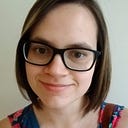Holacracy as a Catalyst for Personal Growth
Social Innovation Academy’s Holacracy Story
When we talk about the transformative power of Holacracy, we’re usually talking about it in a business context: the impact of organizational clarity, reduction of red tape, and the liberation of employees to pursue their purpose. But what kind of impact can self-management have on people as, well, just people?
To answer this question, we need to look no farther than the Social Innovation Academy, or SINA, for short. This Holacracy-powered nonprofit tackles poverty and rising unemployment in sub-Saharan Africa by creating small, self-sustaining communities where marginalized youth can develop skills to become entrepreneurs and community leaders. SINA’s purpose is to empower its scholars to develop sustainable solutions to the root causes of the problems plaguing their home communities. And the most effective way to help their scholars become leaders is to, simply, let them lead.
Earlier this year, I spoke with SINA founder Etienne Salborn about Holacracy’s role in the organization’s purpose. At SINA, Holacracy is more than just a self-management framework for staff: SINA scholars participate in Holacracy practice as well, and it is one of the organization’s primary empowerment and learning tools.
The Beginning Stages
SINA’s story began in 2006 when Etienne, a German native, spent his first year after secondary school volunteering in Uganda. There, he created a scholarship program to sponsor secondary education for disadvantaged children in the area. Although the students in the program felt empowered while continuing their education, after graduation they were largely unable to find work or afford university tuition. Because of the challenges faced by the country’s youth, only one graduate from the first generation of students continued to university.
With more than 75% of its population under the age of 30, Uganda has an estimated youth unemployment rate of 13.3% — and the vast majority of youth are underemployed, settling for low-paying and unstable jobs. Roughly 700,000 Ugandans enter the workforce every year, but only 12,000 formal jobs are created. After finishing secondary education, these students were searching for jobs that simply didn’t exist.
Out of this realization came the idea for the SINA model: “a space where the youth would create their own jobs if no jobs were available.”
Rooted in Self-Organization
The first SINA community was founded in 2014. Etienne and his co-founders knew that the community would be self-organized from the start, although they didn’t implement a specific model at first. “We kind of designed things by ourselves,” Etienne told me. “We had some input from [a teacher] from High Tech High School in the U.S., that has a lot of methodologies [where] students drive their own education and become almost staff within the school. He brought in some ideas of how we can empower scholars — or beneficiaries — better by giving them more responsibilities from the start.”
SINA also brought in staff to both train scholars and manage the more complicated and essential tasks in SINA. Scholars were given minor responsibilities at first and, as they gained more experience and confidence, gradually took on greater responsibilities. The scholars learned by leading and developed confidence in themselves. But, there were some unintended consequences.
“At that point,” Etienne explained, “in 2016, two years later, the system was completely out of balance. The first scholars took up more responsibilities than some of the staff that were paid. Then it didn’t make sense anymore. And at that point, things became a bit chaotic… there was a lot of unstructuredness.” That’s when Etienne re-discovered Holacracy, having first read about the self-management system in Frederic Laloux’s Reinventing Organizations. “I thought, why not? Let’s give it a try.”
Implementing Holacracy
“We started implementing Holacracy by ourselves, without having external input, just from the online resources and everything we could find. And immediately there was an improvement and things got more clear when defining roles. And we did this whole process together — defining roles, and then allocating them, and having a process for how to synchronize and how to update, which we didn’t have before. But still, it was a bumpy journey, and we did many things, looking back now, almost contrary to how it’s supposed to be.” After taking this bootstrap approach to adopting Holacracy, SINA brought in Certified Holacracy Coach Christiane Seuhs-Schoeller to help strengthen their practice.
Once Holacracy practice was firmly in place, SINA’s organization became more structured. After a few months of onboarding training, SINA scholars begin to take on defined roles within the Holacracy framework to manage the day-to-day operations of their community. These roles fulfill not just community needs such as meal planning, organizing living spaces, and caring for pets, but also SINA’s needs as a nonprofit, with roles for volunteer coordination, recordkeeping, and accounting. According to Etienne, this initial role-filling is when personal and professional growth really begins. And it works: SINA communities are almost entirely managed by the scholars themselves. In fact, at any given time, SINA has only 5-10 employees, compared to 60–70 scholars.
True to the philosophy and practice of Holacracy, SINA scholars are free to lead their roles with autonomy and authority. Not only are SINA scholars learning the practical skills necessary to begin their own social enterprises, but they are also practicing leadership on a daily basis and becoming independent in a truly meaningful way.
Cultural and Personal Impact
The impact of this independence extends beyond a business context for SINA scholars. Etienne discussed how radical the concept of self-organization and distributed leadership can be in the communities where SINA operates: “What we also try to prove is that a different system is possible, that self-organization can work in this region of the world, where there’s a lot of hierarchical structures — and much stronger than in other regions — from political systems to family structures. In school systems, people are not trying to think for themselves, they’re just trying to follow orders.”
For many scholars, their time at SINA is the first time they are treated as a leader in any regard, capable of taking on meaningful responsibility. Self-organization and distributed authority are especially radical concepts given these scholars’ often difficult upbringings and a cultural background where top-down hierarchy rules. Etienne explains, “Refugees who have come from backgrounds where the whole conflict is often caused by a struggle for power, money, and prestige… [this is] an approach that people didn’t think would be possible in this region. But we have seen that it can be possible. Communities can structure themselves by distributing authority, not just with one person on top, making all the decisions.”
Living in a community where they have full authority to take independent action and think for themselves, SINA scholars come to see and believe that they have the autonomy and power to choose their own path. This, coupled with the practical skills learned through hands-on experience, grants life-changing confidence to program graduates. And many say that they are able to find meaning in their past suffering as they build social enterprises to help those living through the same struggles they once did.
Looking to the Future
The second SINA community was established in 2016 when three scholars decided that after graduating, their social enterprise would be to bring the SINA model to their refugee camp. While Etienne hadn’t initially intended to replicate the SINA model beyond the flagship community, it made sense: these refugees were so impacted by their two years at SINA that they wanted to bring that experience to their home community. And they were fully empowered to do so.
By 2019, two more communities were founded in Uganda, and SINA Global was established with the purpose of creating a “community of communities.” As SINA works to scale their model to a worldwide context, they are working to expand beyond Uganda and create communities in Zimbabwe, Kenya, and the Congo.
Over the course of the past five years, SINA graduates have created thirty-six social enterprises — many of which are practicing Holacracy — and almost half of graduates are self-employed. Most of the rest are either employed or continuing studies elsewhere; only 8% of graduates report that they are still job hunting. And they unanimously agree that SINA was more valuable than their time in school.
Holacracy creates an empowering environment in which everyone in an organization can be a leader of their roles, and for many, this is transformative on a personal level. When people are treated as leaders, they begin to see themselves as leaders — of their roles, and of the course of their own lives.
You can learn more about SINA and their work on their website.
Want to learn more about Holacracy? Check out the website or sign up for an Intro Webinar.
Holacracy® and GlassFrog® are registered trademarks of HolacracyOne, LLC.

